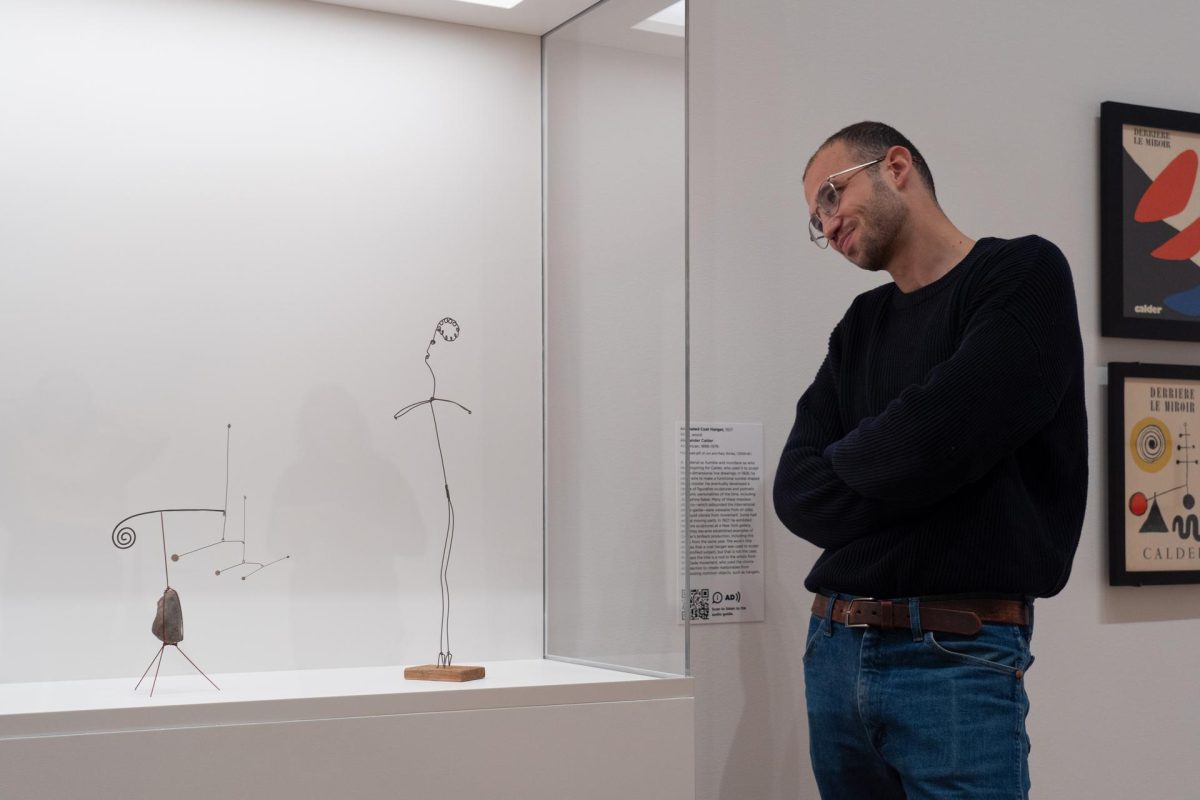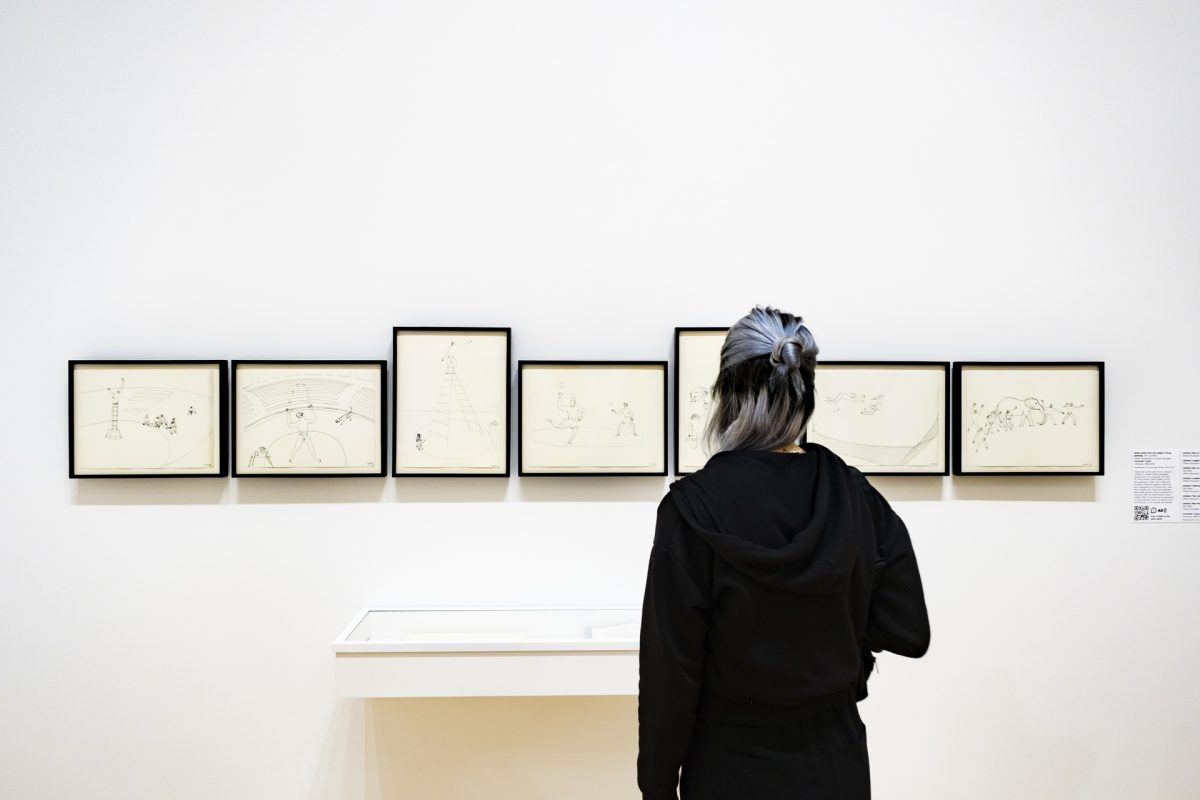Calder Smartphone Tour: Animated Coat Hanger
A material as humble and mundane as wire proved inspiring for Alexander Calder, who used it to create three-dimensional line drawings. During the late 1920s, he sculpted a range of wire acrobats, performers, animals, and portraits of famed figures of the day, including Fernand Léger, Josephine Baker, and Joan Miró.
These ‘drawings in space’ enthralled the international avant-garde for their projected shadows, captured voids, and challenged perceptions. His radical objects not only upended space through their transparent volumes, but also presented the reality of motion through vibrating wire lines and the inclusion of actual moving parts. As a result of these works, Calder was lauded as Le roi du fil de fer, or the king of wire.
Although intimate in size, Animated Coat Hanger speaks volumes about Calder’s ingenuity and resourcefulness with wire. The work’s title implies that a coat hanger was used to sculpt the profiled subject, but that is not the case. Perhaps the title is a nod to the artists from the Dada movement, who used the choice of selection to create readymades from preexisting common objects, such as hangers.
Tune in to the ninth stop on the free smartphone tour of Calder: In Motion, The Shirley Family Collection to hear SAM Susan Brotman Deputy Director for Art José Carlos Diaz and New York-based artist Kennedy Yanko share their perspectives on this simple yet surprising wire sculpture. Explore all 16 stops of the audio tour now via our SoundCloud or in our galleries by scanning the QR code next to select artworks on view.
Animated Coat Hanger, 1927
NARRATOR: Wire sculpture was Calder’s first great invention. He removed mass from sculpture and introduced transparency as well as gentle movement through vibration.
JOSÉ CARLOS DIAZ: Animated Coat Hanger is really special to this exhibition.
NARRATOR: Curator José Diaz.
JOSÉ CARLOS DIAZ: This particular work is from 1927 which is an example of one of the earliest works in the show. Calder had been so innovative with wire, so much so that we use the term drawing in space.
NARRATOR: Artist Kennedy Yanko:
KENNEDY YANKO: The fact that he would carry pliers in his pocket and just decide to start drawing is such a true thing to me, the idea of choosing a medium to represent drawing.
JOSÉ CARLOS DIAZ: But what’s really beautiful about it is the simplicity. You’ll notice the wooden base, which looks like it could have been a discarded material. You’ll notice the figurative aspect of it, sort of the profile of an individual.
KENNEDY YANKO: It’s surprising, and it’s intriguing, and somehow it’s barely there, but when you take a closer look at it, the sensibility, the delicacy, the gesture, the breasts, the face, how can a line have so much effect and so much life within it? So, I think that it’s just a gesture to like how powerful the way that the eyes can read something, and the way that the mind can fill the rest of the space. And I think with Calder’s work there’s always opportunity for that. He knows that the mind will always fill the blank spaces and always complete what needs to be there.
– Lily Hansen, SAM Marketing Content Creator
Image: Installation view of Calder: In Motion, The Shirley Family Collection, Seattle Art Museum, 2023, © 2024 Calder Foundation, New York / Artists Rights Society (ARS), New York, photo: Chloe Collyer.

